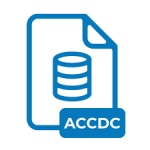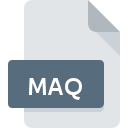.UDL File Extension

Microsoft Universal Data Link File
| Developer | Microsoft |
| Popularity | |
| Category | Database Files |
| Format | .UDL |
| Cross Platform | Update Soon |
What is an UDL file?
In the realm of computing, file extensions serve as identifiers for the type of data contained within a file. One such extension, .UDL, is associated with Microsoft Universal Data Link files. These files, though seemingly simple in nature, play a crucial role in connecting applications to various data sources.
In this article, we delve into the origin, history, structure, technical specifications, advantages, and disadvantages of .UDL files. Additionally, we explore methods for converting and opening them across different operating systems.
More Information.
Microsoft first introduced the .UDL file extension alongside the release of Microsoft Data Access Components (MDAC), now known as Windows Data Access Components (WDAC), in the late 1990s.
At its core, the purpose of .UDL files was to offer a user-friendly interface for configuring OLE DB (Object Linking and Embedding, Database) data connections.
This allowed developers and users to specify connection parameters such as server, database, authentication method, and provider settings without delving into complex code or configuration files.
Origin Of This File.
The .UDL file extension traces its origins back to Microsoft’s efforts to streamline data access within its ecosystem. Introduced as part of the Universal Data Access (UDA) initiative, .UDL files provided a standardized means for configuring data connections across different Microsoft applications.
This format aimed to simplify the process of establishing connections to diverse data sources, including databases, spreadsheets, and web services.
File Structure Technical Specification.
A .UDL file is essentially a plain text file with a simple structure. It contains key-value pairs representing connection parameters.
The structure typically includes parameters like Provider, Data Source, User ID, Password, and others, depending on the data source being connected.
How to Convert the File?
Converting .UDL files involves extracting the connection parameters and using them to create connection strings compatible with the target environment. Here’s a general approach to convert a .UDL file:
- Open the .UDL File: Use a text editor to open the .UDL file. This can be done by right-clicking the file and selecting “Open With” and then choosing a text editor like Notepad (on Windows) or TextEdit (on macOS).
- Extract Connection Parameters: Within the .UDL file, locate the connection parameters such as Provider, Data Source, User ID, Password, etc. These parameters are typically specified in key-value pairs.
- Create Connection String: Use the extracted connection parameters to construct a connection string compatible with the target environment. The connection string format may vary depending on the database or data source being accessed.
- Update Application Configuration: Once you have the connection string, update the configuration of your application or database connection settings to use the new connection string. This may involve editing configuration files or updating connection settings within your application.
- Test the Connection: After updating the configuration, test the connection to ensure that it works correctly with the new connection string. This may involve connecting to the database or data source from your application or using tools like SQL Server Management Studio to verify the connection.
Advantages And Disadvantages.
Advantage:
- Simplicity: .UDL files offer a straightforward method for configuring data connections without the need for complex code or configuration files.
- Ease of Use: Users can create and edit .UDL files using basic text editors, making them accessible to both developers and non-technical users.
- Quick Configuration: .UDL files facilitate quick and simple configuration of data connections, reducing setup time for applications.
Disadvantage:
- Security Risks: Storing sensitive information such as passwords in plain text within .UDL files can pose security risks if not handled securely.
- Lack of Robustness: .UDL files lack robustness compared to more sophisticated connection methods, potentially leading to compatibility issues or data vulnerabilities.
- Platform Dependency: While primarily associated with Windows, .UDL files may present challenges for users on other platforms, requiring alternative methods or tools for configuration.
How to Open UDL?
Open In Windows
On Windows, .UDL files can be opened by double-clicking them, which launches the Data Link Properties dialog where users can configure data connections.
Open In Linux
While .UDL files are primarily associated with Windows, Linux users can still open and edit them using text editors such as Vim or Nano. Configuring data connections may require alternative methods tailored to Linux environments.
Open In MAC
Similar to Linux, macOS users can open .UDL files using text editors like TextEdit or third-party applications. Again, configuring data connections may necessitate platform-specific tools or approaches.
Open In Android
Android devices typically do not have native support for .UDL files. Users may need to transfer the file to a Windows-based system or use specialized apps capable of handling text files to view or edit .UDL files on Android.
Open In IOS
Like Android, iOS devices do not have built-in support for .UDL files. Users can transfer the file to a Windows-based system or use compatible third-party apps available on the App Store to access and modify .UDL files on iOS devices.
Open in Others
For other operating systems or platforms, opening .UDL files follows a similar pattern of using text editors or transferring them to systems where Microsoft tools are available for configuring data connections.













